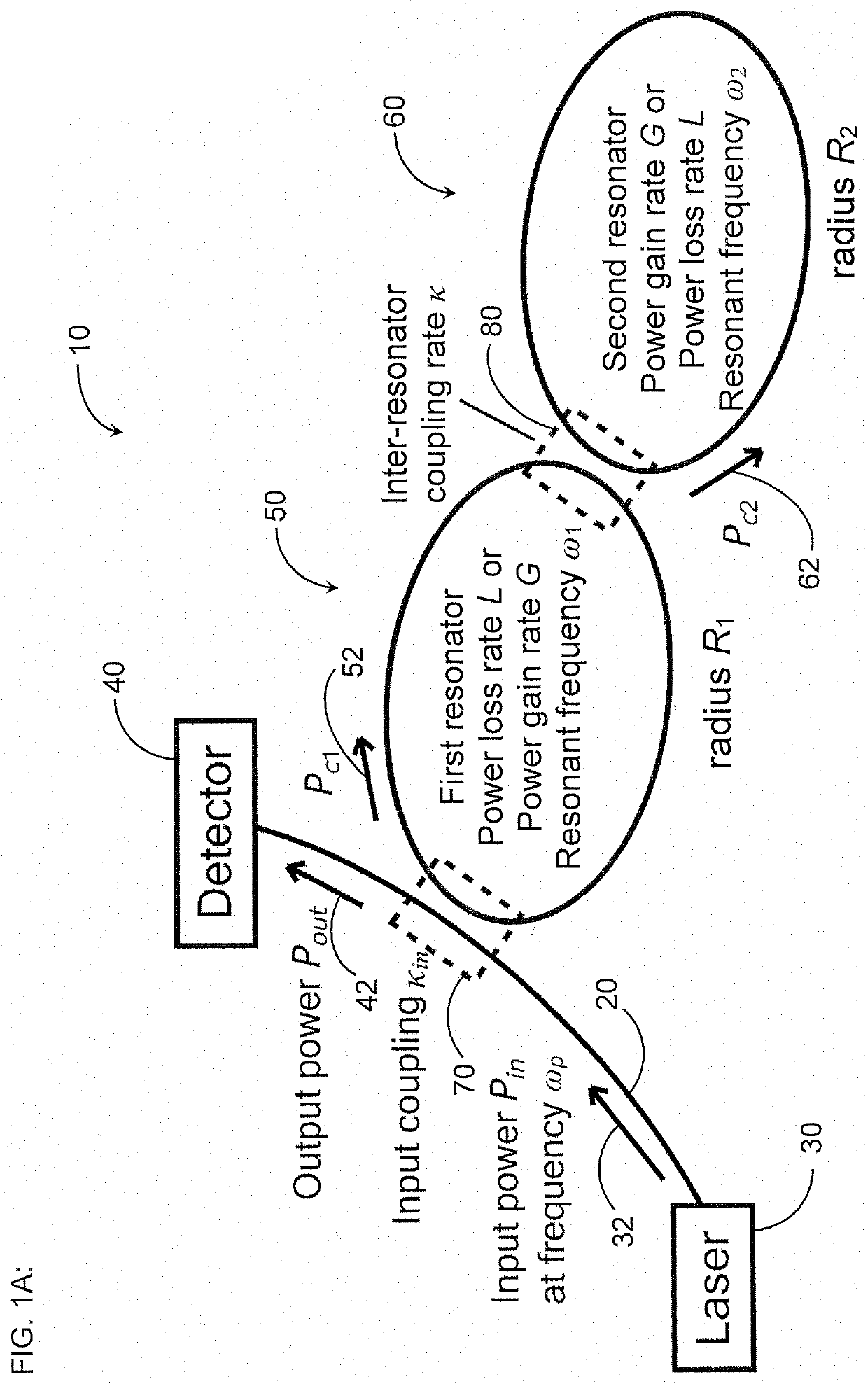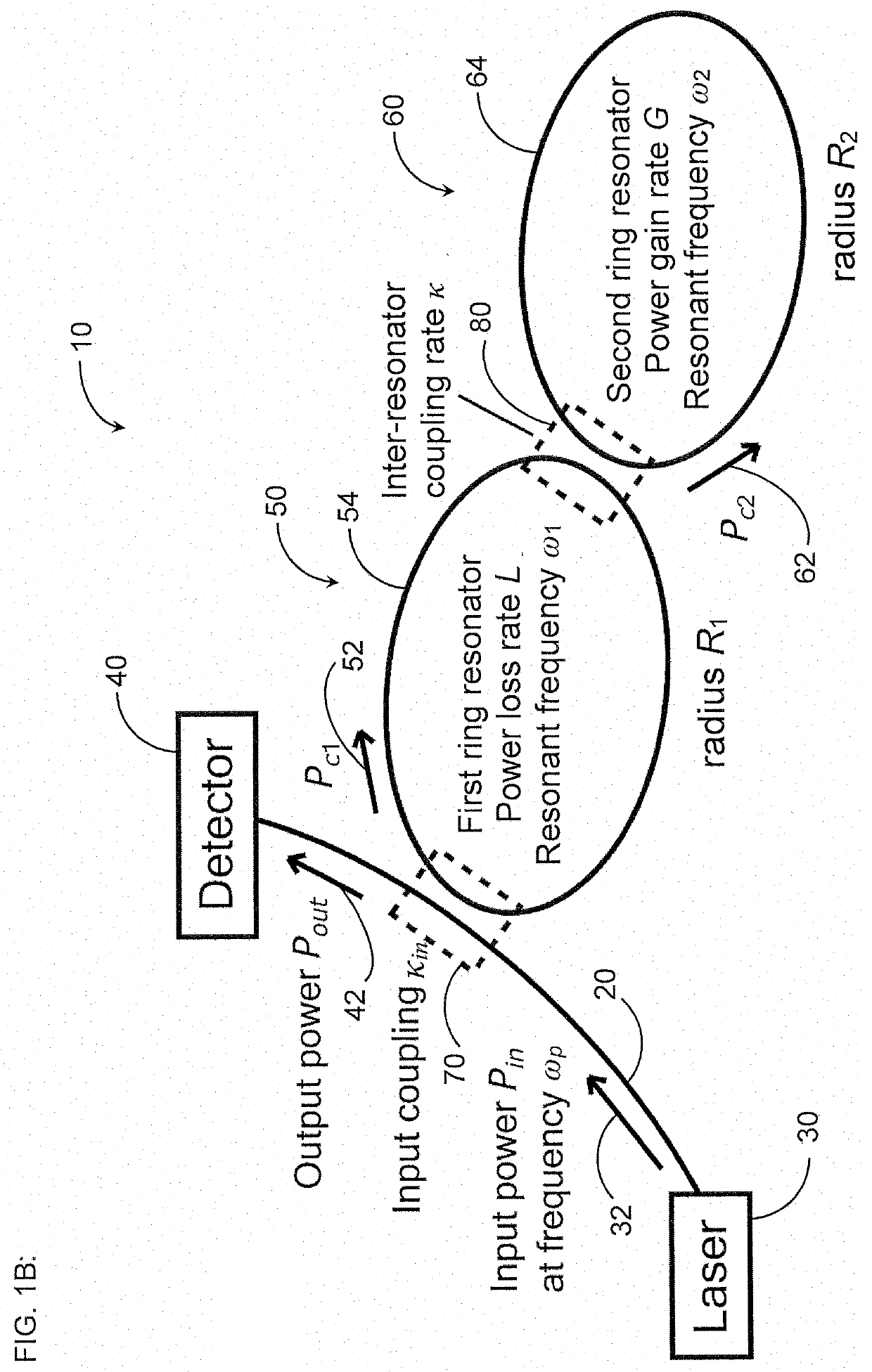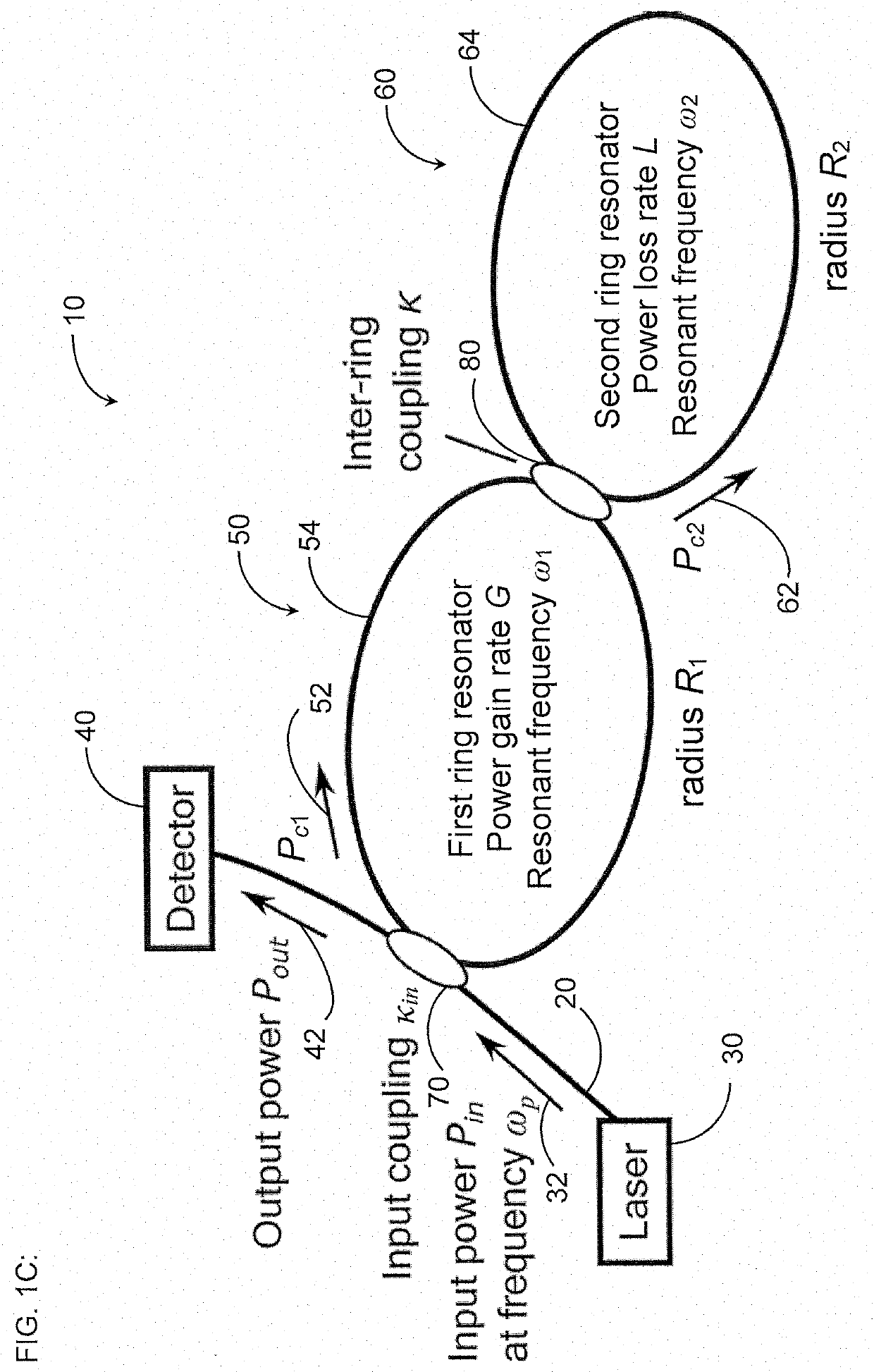Gain-coupled resonator gyroscope
a gyroscope and resonator technology, applied in the field of optical gyroscopes, can solve the problems of erroneous claims, insufficient fiber length reduction, and insufficient concomitant size, weight and material costs,
- Summary
- Abstract
- Description
- Claims
- Application Information
AI Technical Summary
Benefits of technology
Problems solved by technology
Method used
Image
Examples
Embodiment Construction
[0030]Coupled optical resonators with parity-time (PT) symmetry exhibit exceptional points where they become extremely sensitive to external perturbations (see, e.g., Ren et al., “Ultrasensitive micro-scale parity-time-symmetric ring laser gyroscope,” Opt. Lett. Vol. 42, No. 8, pp. 1556-1559 (Apr. 15, 2017)(“Ren”)) and so have gained interest in research as sensors, in particular as highly sensitive gyroscopes. In one particular physical embodiment, PT symmetry is achieved by coupling together two ring resonators, each with identical resonance frequencies, and pumping one ring such that it exhibits a gain equal to the loss of the other ring [see, e.g., B. Peng et al., “Parity-time-symmetric whispering-gallery microcavities,”Nat. Phys., vol. 10, no. 5, pp. 394-398, 2014 (“Peng”)].
[0031]Previous work has proposed that such an optical gyroscope operated at an exceptional point (EP) is responsive to rotations of magnitude Ω by shifting the resonant frequencies of the optical gyroscope i...
PUM
 Login to View More
Login to View More Abstract
Description
Claims
Application Information
 Login to View More
Login to View More - R&D
- Intellectual Property
- Life Sciences
- Materials
- Tech Scout
- Unparalleled Data Quality
- Higher Quality Content
- 60% Fewer Hallucinations
Browse by: Latest US Patents, China's latest patents, Technical Efficacy Thesaurus, Application Domain, Technology Topic, Popular Technical Reports.
© 2025 PatSnap. All rights reserved.Legal|Privacy policy|Modern Slavery Act Transparency Statement|Sitemap|About US| Contact US: help@patsnap.com



